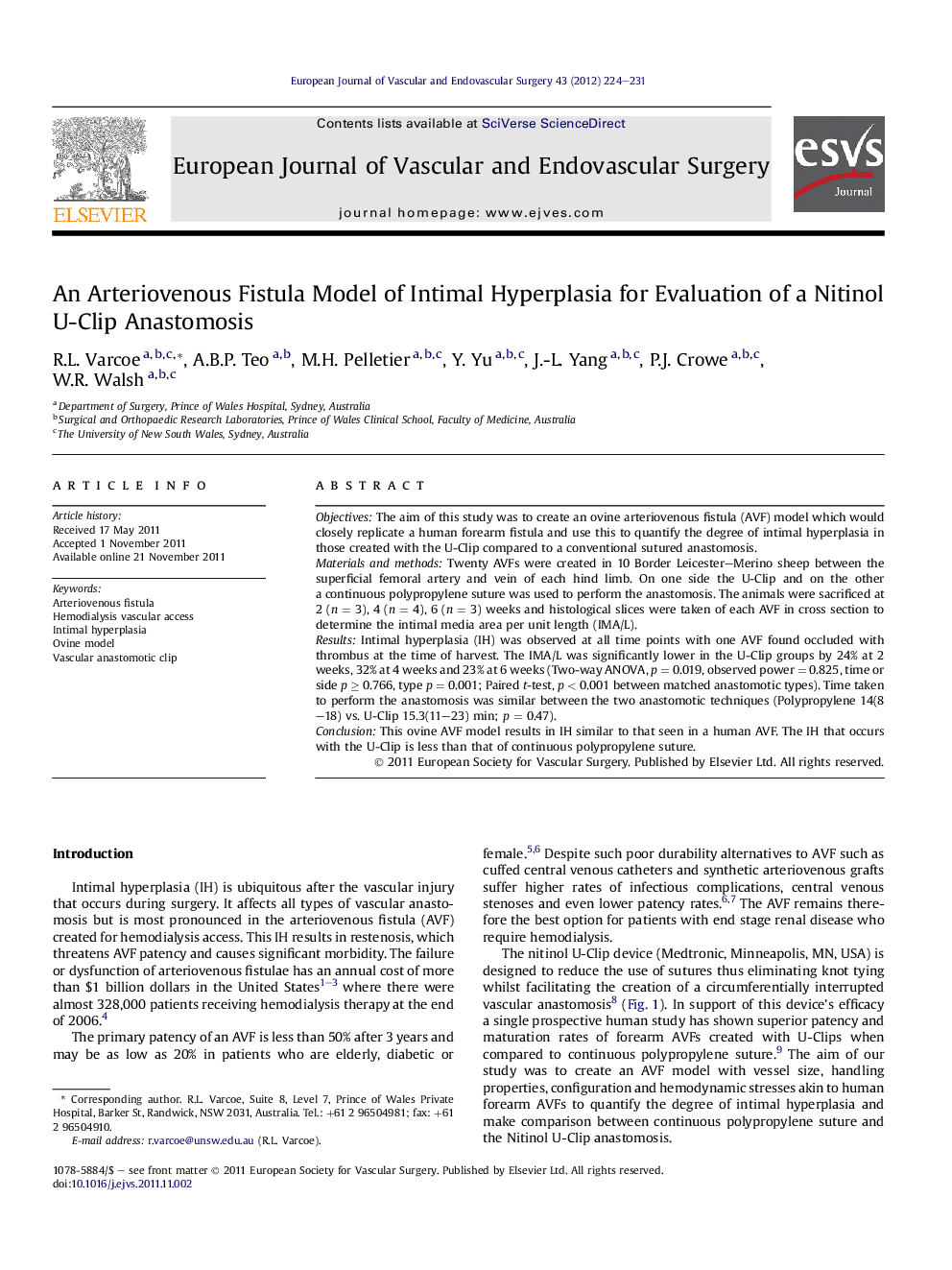| Article ID | Journal | Published Year | Pages | File Type |
|---|---|---|---|---|
| 2913455 | European Journal of Vascular and Endovascular Surgery | 2012 | 8 Pages |
ObjectivesThe aim of this study was to create an ovine arteriovenous fistula (AVF) model which would closely replicate a human forearm fistula and use this to quantify the degree of intimal hyperplasia in those created with the U-Clip compared to a conventional sutured anastomosis.Materials and methodsTwenty AVFs were created in 10 Border Leicester–Merino sheep between the superficial femoral artery and vein of each hind limb. On one side the U-Clip and on the other a continuous polypropylene suture was used to perform the anastomosis. The animals were sacrificed at 2 (n = 3), 4 (n = 4), 6 (n = 3) weeks and histological slices were taken of each AVF in cross section to determine the intimal media area per unit length (IMA/L).ResultsIntimal hyperplasia (IH) was observed at all time points with one AVF found occluded with thrombus at the time of harvest. The IMA/L was significantly lower in the U-Clip groups by 24% at 2 weeks, 32% at 4 weeks and 23% at 6 weeks (Two-way ANOVA, p = 0.019, observed power = 0.825, time or side p ≥ 0.766, type p = 0.001; Paired t-test, p < 0.001 between matched anastomotic types). Time taken to perform the anastomosis was similar between the two anastomotic techniques (Polypropylene 14(8–18) vs. U-Clip 15.3(11–23) min; p = 0.47).ConclusionThis ovine AVF model results in IH similar to that seen in a human AVF. The IH that occurs with the U-Clip is less than that of continuous polypropylene suture.
